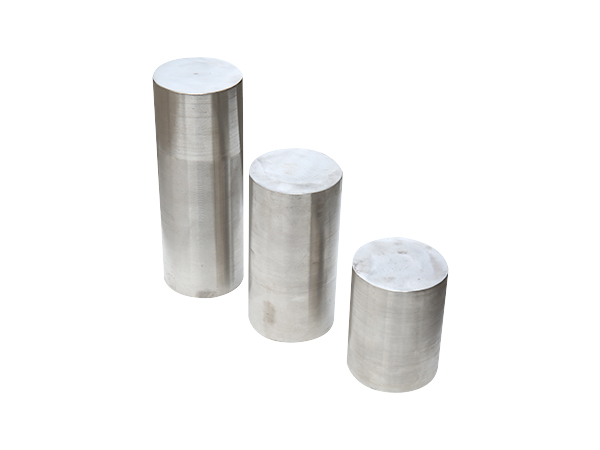A286 (UNS S66286) Iron-Based Superalloy
1. Overview
A286 alloy (UNS S66286) is a precipitation-hardened iron-based high-temperature alloy known for its excellent high-temperature strength, oxidation resistance, and corrosion resistance. It is widely used in aerospace, gas turbines, the automotive industry, and petrochemical applications, especially for components operating at temperatures up to 700°C. Compared with nickel-based superalloys (such as the Inconel series), A286 is more cost-effective and offers superior hot workability and weldability.
2. Chemical Composition (Weight Percent)
Element | Content (wt%) |
|---|---|
Iron (Fe) | Balance |
Nickel (Ni) | 24.0–27.0 |
Chromium (Cr) | 13.5–16.0 |
Titanium (Ti) | 1.9–2.3 |
Molybdenum (Mo) | 1.0–1.5 |
Vanadium (V) | 0.1–0.5 |
Aluminum (Al) | ≤0.35 |
Manganese (Mn) | ≤2.0 |
Silicon (Si) | ≤1.0 |
Carbon (C) | ≤0.08 |
Sulfur (S) | ≤0.03 |
Phosphorus (P) | ≤0.03 |
Boron (B) | 0.001–0.01 |
A286 is primarily strengthened by precipitation of γ′ (Ni₃(Al, Ti)) phases formed by titanium, aluminum, and molybdenum additions.
3. Physical Properties
Property | Value |
|---|---|
Density | 7.93 g/cm³ |
Melting Point | 1364–1424°C |
Coefficient of Thermal Expansion (20–800°C) | 16.1×10⁻⁶ /°C |
Thermal Conductivity (100°C) | 14.6 W/(m·K) |
Specific Heat (25°C) | 460 J/(kg·K) |
Electrical Resistivity (20°C) | 1.12 μΩ·m |
A286 has relatively low thermal conductivity and excellent resistance to high-temperature creep, making it suitable for heat-resistant applications.
4. Mechanical Properties (at Room and Elevated Temperatures)
Property | 25°C | 650°C |
|---|---|---|
Tensile Strength (MPa) | ≥895 | 550–700 |
Yield Strength (MPa) | ≥585 | 345–415 |
Elongation (%) | ≥20 | 15–20 |
Hardness (HRC) | 25–35 | - |
Features:
High-temperature strength up to 700°C
Excellent ductility, even at elevated temperatures
Good creep resistance for prolonged exposure to heat
5. Heat Treatment
A286 is strengthened through precipitation hardening. The standard heat treatment process is as follows:
Process | Temperature (°C) | Duration | Cooling Method |
|---|---|---|---|
Solution Annealing | 980–1010 | 1–2 hours | Water or oil quench |
Aging Treatment | 720–820 | 16 hours | Air cooling |
After heat treatment, A286 shows enhanced yield strength and hardness suitable for high-temperature service.
6. Corrosion Resistance
The high chromium (Cr) content provides excellent oxidation and atmospheric corrosion resistance up to 700°C.
Offers moderate resistance to acidic environments (nitric acid, hydrochloric acid, sulfuric acid), although not as good as nickel-based alloys like Inconel 718.
Good resistance to stress corrosion cracking (SCC) in seawater and chloride environments, making it suitable for marine and chemical settings.
7. Processing Characteristics
(1) Machinability
Easier to machine than nickel-based alloys like Inconel 718; suitable for turning, milling, drilling, etc.
Due to work hardening:
Use carbide or ceramic tools.
Apply low cutting speeds and high feed rates.
Use water-soluble coolants to reduce tool wear.
(2) Weldability
Excellent weldability using TIG, MIG, laser welding, and electron beam welding.
Post-weld heat treatment (solution + aging) is recommended to enhance joint strength and corrosion resistance.
8. Applications
Thanks to its excellent combination of high-temperature strength, corrosion resistance, and workability, A286 is widely used in:
(1) Aerospace
Turbine engine components (discs, compressor wheels, fasteners)
Gas turbine blades
Exhaust systems
(2) Oil & Gas
High-temperature, high-pressure piping
Downhole tools
Fasteners
Valves and pump housings
(3) Automotive
Racing engine exhaust valves
High-temperature sensor housings
Turbocharger components
(4) Power Generation
Hot section components in gas turbines
Internal structures in nuclear reactors
(5) Medical Devices
Parts in high-temperature sterilization equipment
Orthopedic implants
9. Comparison with Other Superalloys
Alloy | Max Operating Temp (°C) | Strength | Corrosion Resistance | Cost | Main Applications |
|---|---|---|---|---|---|
A286 | 700 | ★★★☆☆ | ★★★☆☆ | ★★★★☆ | Aerospace, Oil & Gas, Automotive |
Inconel 718 | 980 | ★★★★★ | ★★★★☆ | ★★☆☆☆ | Aerospace, Nuclear, Turbines |
Inconel 625 | 982 | ★★★★☆ | ★★★★★ | ★★☆☆☆ | Chemical, Marine |
Haynes 188 | 1090 | ★★★★☆ | ★★★☆☆ | ★★☆☆☆ | Jet Engines |
Conclusion:
A286 has slightly lower strength than nickel-based alloys like Inconel 718 but offers better machinability and lower cost.
Ideal for applications up to 700°C. For higher temperatures, nickel- or cobalt-based superalloys are recommended.
10. Summary
A286 is a precipitation-hardened iron-based superalloy with excellent high-temperature strength, oxidation resistance, and good machinability.
Suitable for applications up to 700°C, and widely used in aerospace, oil & gas, automotive, and power generation industries.
Offers a more economical alternative to nickel-based superalloys like Inconel 718, but may not be suitable for ultra-high-temperature or extremely corrosive environments.
A286 is a competitive choice for scenarios requiring a balance of high strength, thermal resistance, good processability, and cost-effectiveness!

